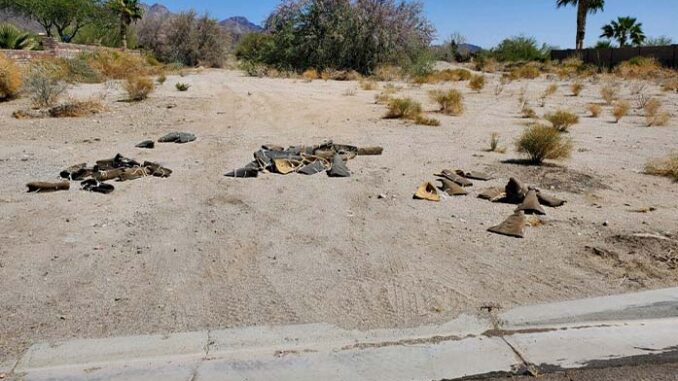
In “Filthy Rich Politicians” Matt Lewis spotlights the hypocrisy of climate movement leaders who “admonish us to drive less, recycle more, reduce waste, and eat less meat to whittle down our carbon footprints” all the while flying around in private jets and attending extravagant international conferences on climate change amongst other things.
But what really pales in comparison to the jets, the mansions and the lavish lifestyles is the blind eye these leaders and their followers turn on the largest and most addressable carbon emitting practice – our maintaining open borders!
Restricting U.S. immigration and better regulating and enforcing current laws, sets off a host of virtuous cycles. One of those encompasses the environment which without any coercion, passing any statutes, or introducing re-education programs, would enable us to better limit urban sprawl, reign in the destruction of ecosystems, and reduce, waste, air and water pollution.
In a recent roundtable insight on energy policy featuring Doomberg, Dr. Anas Alhajji, Adam Rozencwajg and Yra Harris, Dr. Anas stated, “it turns out that bringing a family to the U.S. increases its energy demand on the spot by 70 times.”
During the first two years of the Biden administration there were 4.5 million migrant encounters along America’s Southwest border and that’s in addition to the over 1.2 million “got aways” that evaded border patrol. In 2023, there have been 1.7 million encounters and reports of encounters going down has a lot to do with the administration playing fast and loose with the numbers. And the above are just encounters with people illegally entering the country. Add to those numbers roughly 1.2 million who legally immigrate as well as the hundreds of thousands who arrive each year on temporary nonimmigrant work visas.
Bottom line, the number of people entering the U.S. legally and illegally is both extraordinary and unprecedented. And for those who understand the environmental impact of moving a person from a country with a low carbon footprint to the U.S. which has one of the highest – it’s apocalyptic.
In 2016, we published the immigration problematic environmental impact study (PEIS), which was the first of its kind, and which assessed the potential long-term environmental impact associated with these immigration scenarios: 1) No Action Alternative, in which current immigration rates of approximately 1.25 million per year would be maintained to the year 2100; 2) Expansion Alternative, or 2.25 million annual immigration; and 3) Reduction Alternative, or 0.25 million (250,000) annual immigration to the U.S.
The Expansion Alternative scenario of 2.25 million annual immigration to the U.S was really added to the study as a lark. At that time, we never imagined there’d be an administration so delusional and with immigration policies so divorced from the science of environmentalism and demographics. Yet here we are!
The carbon footprint of a person living in the U.S. is 15 metric tonnes (mt) per annum, and one metric tonne is equal to 1.10231 tons. For comparison and to better understand the impact of open borders on our environment, I share the per capita carbon footprints of a handful of the countries whose citizens have been flocking to the U.S. over the past 30 months.
- Mexico 3.5mt
- Haiti 0.23mt
- El Salvador 1.05mt
- Guatemala 1.1mt
- China 8.2mt
- Honduras 1.09mt
Matt Lewis is correct in stating that many of the actions the climate community is calling for are pretty much feckless attempts to “whittle down” humans’ environmental impact.
According to authors Paul Murtaugh and Michale Schlax in their often-cited paper Reproduction and The Carbon Legacies of Individuals, the following measures are relatively low yield when you consider that adding one migrant child yields as much as 9,441mt of carbon over the course of their lifetime. For further context and shock value, consider this, 80% of the population growth in the U.S. can be attributed to immigrants and their children.
| Action | CO2 saved metric tonnes Over a Lifetime |
| Increase car’s fuel economy from 20 to 30 mpg | 148 |
| Reduce miles driven from 231 to 155 per week | 147 |
| Replace single-glazed windows with energy-efficientwindows | 121 |
| Replace ten 75-w incandescent bulbs with 25-wenergy-efficient lights | 36 |
| Replace old refrigerator with energy-efficient model | 19 |
Given the extraordinary on the spot carbon emissions created by migrants, I’m gobsmacked by the environmental community’s silence. Either climate activists are woefully ignorant or happily delusional of immigration’s implications.
The great tragedy in all of this is that it is preventable. People are illegally entering the U.S. because the Biden administration is allowing it to happen, and even enabling it. Moreover, if Congress had the will to do so, it could curtail legal immigration.
Reducing our carbon footprint and becoming better stewards of the environment does not require apocryphal degrowth strategies that will not only lower the standard of living for most Americans but could also lead to a rise morbidity and jeopardize our national security.
In closing, it’s not just the environment that suffers from open borders. The influx of people negatively impacts labor markets for both wage earners and salaried professionals. In turn, it affects housing, as costs rise in direct proportion to increased demand. And it impacts us on a humanitarian level, as the resources our society has allocated for helping our own vulnerable populations become more scarce.
